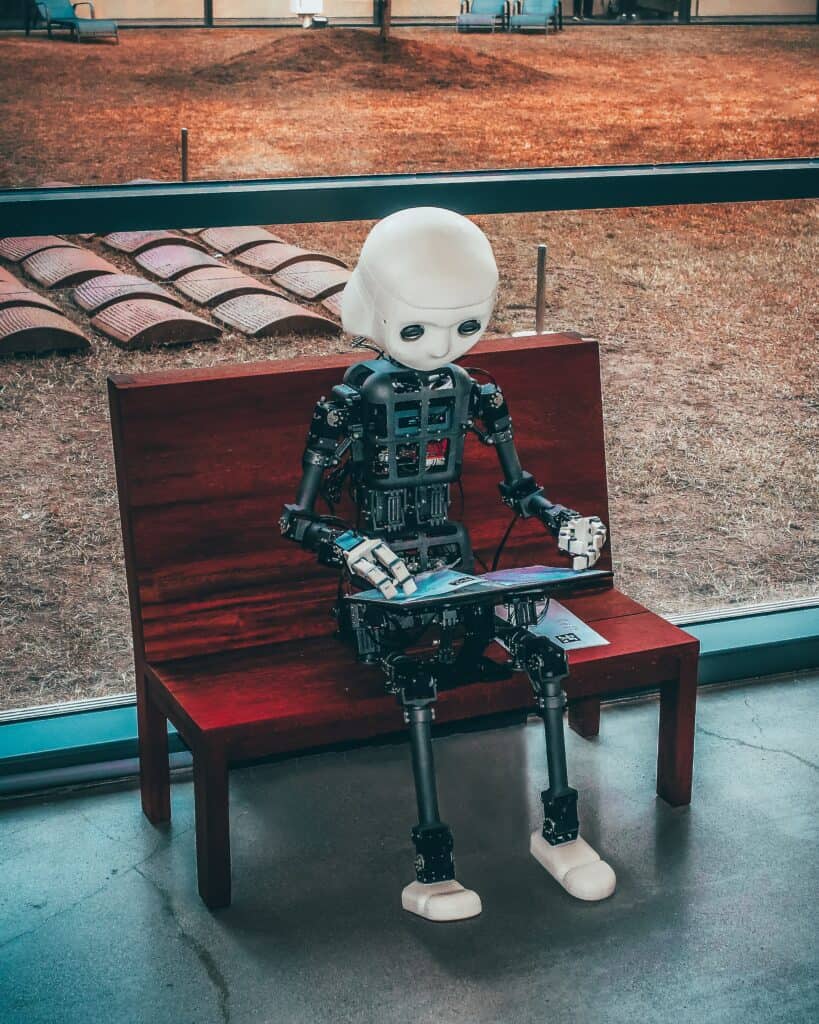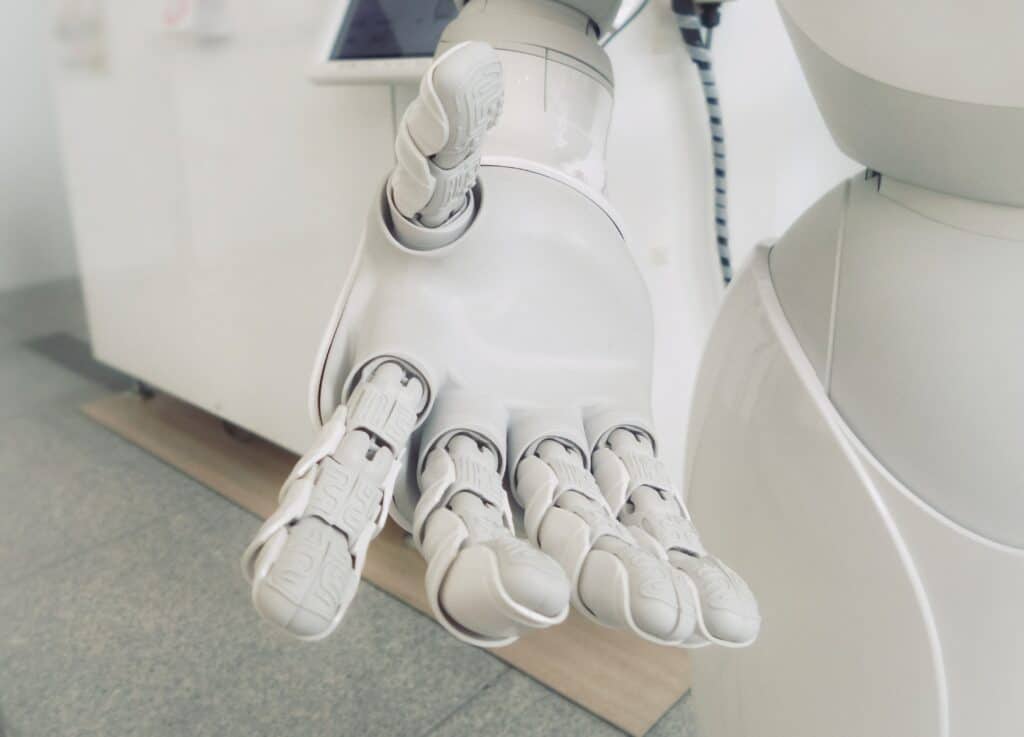
In today’s rapidly evolving world, where technological advancements are reshaping industries and transforming traditional work processes, it’s no wonder that professionals in the fields of Learning and Development (L&D), coaching, training, and leadership are experiencing a constant barrage of questions about the potential threat of automation. The looming concern of robots taking over our jobs is a topic of endless debate. As L & D consultants, coaches, trainers, and leadership specialists, we find ourselves at the centre of this discussion.
One area that has recently captured significant attention is the emergence of chatbots powered by artificial intelligence (AI). These virtual assistants have become increasingly prevalent, with many of us incorporating them into our daily routines to streamline tasks and enhance productivity. However, amidst the growing enthusiasm for AI-enabled chatbots, it is crucial to acknowledge certain misconceptions surrounding their capabilities.
In this blog, we will delve into the realm of chatbots and AI, aiming to shed light on the actual potential and limitations of these automated conversational agents. By examining and debunking the most common misconceptions associated with AI-enabled chatbots, we can better understand how these tools can augment our professional endeavours.
Let’s start first with Artificial empathy:
One prevalent misconception surrounding chatbots with AI is the belief that they possess the ability to empathise with users. However, empathy, which entails understanding and sharing another person’s feelings, requires emotional awareness and consciousness—qualities that chatbots lack. While chatbots like ChatGPT can generate empathetic responses, they are not genuinely experiencing emotions or demonstrating intrinsic empathy. Instead, their compassionate behaviour results from extensive training in sympathetic communication patterns, enabling them to predict when to formulate empathetic responses. It is essential to acknowledge that the empathetic behaviour exhibited by chatbots is learned rather than stemming from genuine emotional understanding.
Nevertheless, the absence of true empathy should maintain the value of chatbots as long as they efficiently fulfil the required tasks. A compelling example can be found in a study conducted on an online healthcare forum, where patients sought answers to their questions. Traditionally, these questions were answered by doctors, but in this study, a chatbot assistant was introduced. Surprisingly, the chatbot assistant’s responses were not only preferred over those of the doctors but also rated significantly higher in quality and empathy (Ayers et al., 2023). The superior quality of the chatbot’s answers can be attributed to its access to a vast knowledge database, surpassing that of an individual doctor. The study’s findings highlight the potential of chatbots to provide effective support, even in areas where empathy is crucial. Consequently, understanding how chatbots can appear empathetic as written word assistants and human e-coaches becomes an important topic to explore in the subsequent sections.
While chatbots can possess extensive knowledge and “intelligence” programmed into them, they must recognise that they cannot replicate genuine human emotions. When faced with complex human behaviour and unfamiliar scenarios, a chatbot is unlikely to make decisions that genuinely prioritise the well-being of the individuals involved. While chatbots can be dependable for specific tasks, they fall short when engaging in profound human interaction. Their limitations become evident when navigating complex interpersonal dynamics and understanding nuanced emotions, making them less suitable for in-depth human interaction.


Chatbots with AI also lack neutrality and objectivity:
Chatbots with AI are often presumed to provide objective and neutral information. However, the quality of their answers is heavily influenced by the training data they are exposed to. If the training material predominantly contains texts with a particular worldview or bias, it can result in biased responses from the chatbot. For instance, if a chatbot is asked to list the most influential philosophers in history and the training data predominantly includes information about male philosophers, it may inadvertently produce a list that excludes critical perspectives from other genders. This highlights the importance of carefully curating training data to ensure a more balanced and inclusive chatbot experience.
Finally, the third misconception is about Artificial intelligence vs. true intelligence:
While chatbots with AI can mimic human-like behaviour and process information at remarkable speeds, they do not possess true intelligence as humans do. Chatbots rely on learning patterns and rules during training to generate responses. They excel at providing accurate and fluent answers based on the information they have been exposed to but need more capacity for creativity and originality. This limitation becomes evident in longer texts or dialogues where repetitive phrasing may occur. Additionally, there is a concern that excessive reliance on chatbots may impact human intelligence, gradually reducing our creativity and originality in communication.
When using an AI chatbot, you’ll find that the more text or information you provide, the more comprehensive and valuable the generated response will be. It’s akin to asking someone to write an essay based on the text you provide. If you only offer a couple of sentences, regardless of the vast information available on the internet, the chatbot is likely to reach a point where it starts repeating information after a few lines. In contrast, humans can seek solutions and find ways to make things work even with limited context. Thus, providing more context to an AI chatbot yields better outcomes, unlike humans, who can work with less to achieve a satisfactory result.
By recognising Realities, we can truly maximise human potential.
Understanding the realities and limitations of chatbots with AI is essential to harness the full potential of this technology in our professional lives. While chatbots can undoubtedly offer valuable support and streamline our daily tasks, it is crucial to recognise that they are not meant to replace human labour or expertise. Instead, they should be viewed as tools that complement and enhance our capabilities.
One crucial aspect to consider is that chatbot responses are influenced by the training data they receive, and their intelligence is derived from algorithms rather than genuine human intellect. While they can provide information and assistance, they lack the innate creativity, intuition, and emotional depth that humans possess. Through this understanding, we can make more informed use of chatbots, utilising their strengths while being mindful of their limitations.
As we navigate the world of chatbots, it is vital to balance leveraging their efficiency and supplementing them with human interaction’s unique qualities and capabilities. Rather than relinquishing control entirely and allowing chatbots to take over, we should strive to educate ourselves on effectively harnessing these tools. Fields and roles that require a strong human touch, such as HR, HRM, CHRO, coaches, psychologists, and many others, still greatly benefit from human expertise and empathy.
By embracing the symbiotic relationship between humans and chatbots, we can optimise our productivity and efficiency while maintaining the indispensable human element that brings depth and understanding to our interactions. Let us continue to explore and innovate, harnessing the power of technology alongside our inherent abilities to create a future where both human and artificial intelligence coexist harmoniously.




